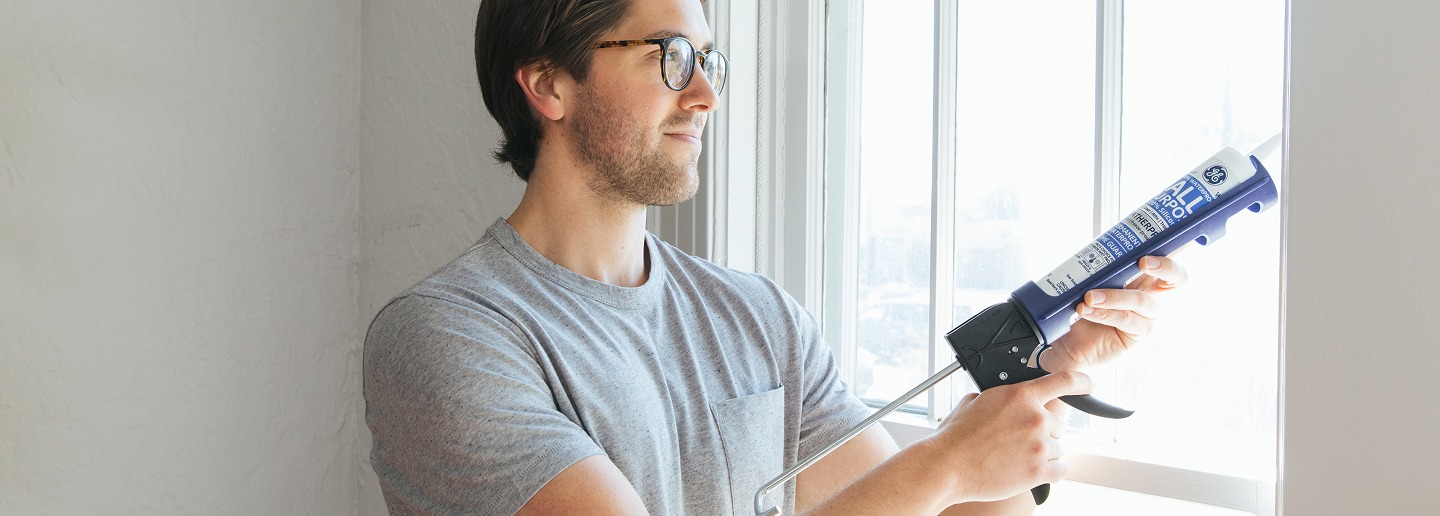Air sealing and insulation tips to get your house knitted up for sweater weather.

As the golden days of summer give way to crisp autumn mornings and icy winter evenings, now is the perfect time to prepare your home for cool weather days. One of the most effective, affordable — and often overlooked — ways to stay cozy and reduce your energy bills is DIY weatherization, insulation and air sealing.
If you’d like to learn more about DIY air sealing and insulation, read on! If you’ve done all the DIY you can do, and you’re ready for the pros to roll out the insulation, you’re in the right place. You can learn more about our Quality Contractor Network right here. Or, you can use our “Find a Contractor” search tool to take the guesswork out of finding a vetted, licensed and insured contractor for air sealing and attic and wall insulation rebate projects.
What Is Air Sealing?
If you’ve ever felt a chilly draft sneak under your door or watched your heating bills climb as the temperatures plummet, your home might be telling you it’s time to seal the gaps. The good news? Not only are air sealing and insulation rebates available from TVA EnergyRight® and your local power company but there’s plenty of time to take action now.
Air sealing is the process of closing up the small cracks, gaps, and holes in your home’s building envelope — the physical barrier between the indoors and outdoors. Even if you made the air sealing rounds last fall, we recommend making this an annual event. Homes — especially older ones — may settle and shift as seasons change.
What are common “problem areas” for air leaks?
As you consider air sealing your home, pay close attention to:
- Attics and crawlspaces (and their hatches).
- Window frames, panes and sashes.
- Door jambs, sills and windows.
- Plumbing and electrical penetrations.
- Dishwasher and refrigerator connections.
- Baseboards and where walls meet the ceiling.
- Electrical outlets and vent registers.
- Recessed lights, vents and fans.
Individually, these air leaks may seem minor but together, they can add up. And in the winter, they allow your precious warm air to escape while inviting cold air to seep in. Effective insulation and air sealing can help stop energy loss in its tracks.

What’s the best way to detect air leaks?
Professional home energy auditors use a device known as a blower door to determine the amount of air entering or escaping your home. A blower door is essentially a powerful fan that pulls air out of your home, lowering the air pressure inside. This allows higher pressure outside air to flow inside. The analyst will then use infrared cameras or nontoxic smoke to visualize the air leaks in your home.
If you’d rather take a low-cost DIY approach, you can conduct a low-tech building pressurization test yourself. It won’t be as precise and a blower door test, but it’ll put you on the right path.
- Check the forecast and time your test for a windy day — this makes it easier to feel the drafts.
- Turn off combustion appliances such as gas ranges, ovens, furnaces and water heaters.
- Close all your windows, exterior doors, vents, and flues.
- Turn on exhaust fans — like bathroom exhaust fans and range hoods — or use a tight-fitting window exhaust fan to suck air out of your home.
- Light an incense stick and pass it around the edges of common “problem areas.” (See above for a full list.) Not a fan of incense? Dampen your hand and slowly move it around these areas — drafts will feel cool to your hand.
Why does air sealing matter?
Lower energy bills
When your home leaks air, your heating system has to work harder to maintain a consistent temperature. That means higher energy consumption — and higher utility bills. According to the U.S. Department of Energy, air sealing and insulation can reduce heating and cooling costs by an average of 15%, and in some cases even more.
In the Tennessee Valley, where temperatures can swing dramatically between seasons, a well-sealed home helps your HVAC system operate more efficiently and last longer.
Improved comfort
A drafty home isn’t just inefficient — it’s uncomfortable. Air leaks can lead to cold spots in certain rooms, inconsistent temperatures between floors, and the frustration that comes with being both uncomfortable and tired of spending more on heating.
When you seal air leaks and add the right amount of insulation, your home maintains a more consistent temperature year-round.
Better indoor air quality
Air sealing also helps protect your indoor air. Gaps in your building envelope don’t just let conditioned air escape — they can let in dust, pollen, mold spores — and even unwanted pests and houseguests (of the critter variety). In some cases, leaks from crawlspaces or attics can allow moisture to accumulate, resulting in a musty odor or mold growth.
Air sealing and insulation can be a big win for allergy sufferers and families with young children or older adults.
How can I fix air leaks?
You don’t have to do everything at once. Focus on key areas that can make the biggest difference:

Seal doors and windows.
- Use weatherstripping around doors and movable window sashes.
- Apply caulk to seal cracks around stationary window frames and exterior trim.
- Install door sweeps to block drafts at the bottom of exterior doors.
Address the attic and crawlspace.
- Look for gaps around plumbing vents, electrical wiring, and chimneys in your attic.
- Use expanding foam or caulk to seal small holes, and install covers or gaskets where needed.
- In crawlspaces, sealing gaps between the foundation and framing can stop cold air from entering your floors.
Add or upgrade insulation.
If you want to level up, consider adding or upgrading your insulation. In the South, many homes are under-insulated — especially in older houses. If the floor joists are exposed in your attic, for example, that’s a strong indication that you need additional insulation. Fortunately, rebates are available. Here are key areas to consider:
- Attic insulation: Consider blown-in cellulose or fiberglass batt insulation to reach the recommended R-values for your region.
- Crawlspace insulation: Insulating the floor above the crawlspace can help maintain warmth on the first floor.
- Wall insulation: Harder to retrofit, but sometimes possible with dense-pack cellulose or foam injection.
You don’t always need a full insulation overhaul. Even topping off attic insulation or insulating around rim joists can make a big difference.
Not sure where to start? We’re here to help.
With the right support and incentives, making your home more efficient doesn’t have to be complicated. Start by exploring rebates available for insulation, air sealing, heat pumps, mini splits, and other energy upgrades.
Need a contractor you can trust? Use TVA EnergyRight’s Quality Contractor Network to find licensed, insured professionals who are vetted for quality, safety, and customer service.



